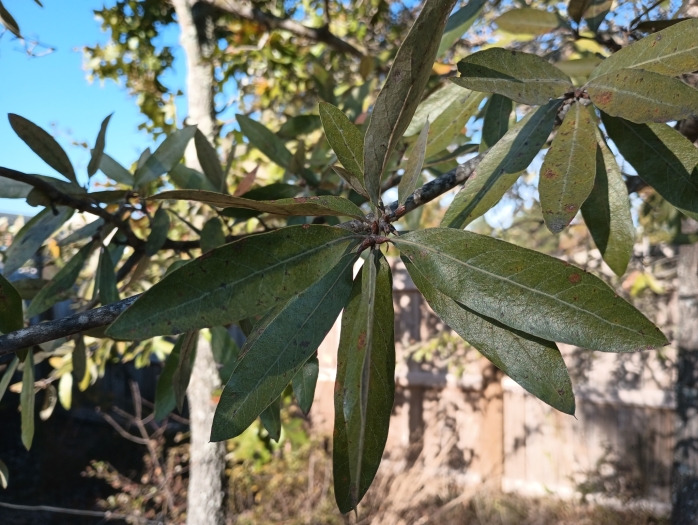Bluejack Oak
(Quercus incana)
Bluejack Oak (Quercus incana)
/
/

© Raven Dandridge
CC BY 4.0
Image By:
© Raven Dandridge
Recorded By:
Copyright:
CC BY 4.0
Copyright Notice:
Photo by: © Raven Dandridge | License Type: CC BY 4.0 | License URL: http://creativecommons.org/licenses/by/4.0/ | Uploader: feroxara | Publisher: iNaturalist |
























Estimated Native Range
Summary
Quercus incana, commonly known as Bluejack Oak, is a deciduous tree native to dry, sandy, and acidic soils of pine barrens and oak scrub habitats in the Atlantic and Gulf coastal plains. Its range extends from Virginia to Florida and west to Texas, reaching inland to Oklahoma and Arkansas. Typically, it grows to about 33 feet tall, but it can reach a maximum height of 49 feet. The Bluejack Oak has a distinctive appearance with its glossy green leaves that have a woolly, bluish underside, and it produces small, rounded acorns that are a valuable food source for wildlife.
The Bluejack Oak is valued for its adaptability to poor, sandy soils and its resistance to fire, making it an excellent choice for xeriscaping and naturalistic plantings in its native range. It is also used for restoration projects in pine barrens ecosystems. In cultivation, it requires full sun and well-drained, acidic soil. While it is not commonly used in urban settings due to its specific soil requirements, it is an important species for wildlife habitats, supporting various animals including Sherman’s fox squirrel. It is relatively low-maintenance but can be susceptible to oak wilt disease.CC BY-SA 4.0
The Bluejack Oak is valued for its adaptability to poor, sandy soils and its resistance to fire, making it an excellent choice for xeriscaping and naturalistic plantings in its native range. It is also used for restoration projects in pine barrens ecosystems. In cultivation, it requires full sun and well-drained, acidic soil. While it is not commonly used in urban settings due to its specific soil requirements, it is an important species for wildlife habitats, supporting various animals including Sherman’s fox squirrel. It is relatively low-maintenance but can be susceptible to oak wilt disease.CC BY-SA 4.0
Plant Description
- Plant Type: Shrub, Tree
- Height: 30-55 feet
- Width: 25-45 feet
- Growth Rate: Slow, Moderate
- Flower Color: N/A
- Flowering Season: Spring
- Leaf Retention: Deciduous
Growth Requirements
- Sun: Full Sun, Part Shade
- Water: Low
- Drainage: Fast, Medium
Common Uses
Drought Tolerant, Erosion Control, Fire Resistant, Low Maintenance
Natural Habitat
Native to dry, sandy, and acidic soils of pine barrens and oak scrub habitats in the Atlantic and Gulf coastal plains
Other Names
Common Names: Upland Willow Oak, Sandjack Oak
Scientific Names: , Quercus incana, Dryopsila cinerea, Dryopsila oligodes, Dryopsila verrucosa, Quercus brevifolia, Quercus cinerea, Quercus cinerea, Quercus cinerea f. dentatolobata, Quercus cinerea var. dentatolobata
GBIF Accepted Name: